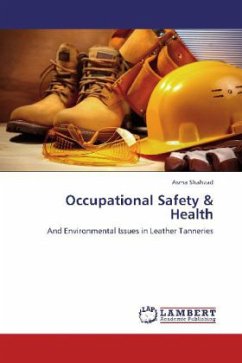The potential environmental impacts of tanning are significant. Composite untreated wastewater, amounting to 20 80 cubic meters per metric ton (m3/t) of hide or skin, is turbid, colored, and foul smelling. It consists of acidic and alkaline liquors, with chromium levels of 100 400 milligrams per liter (mg/l); sulfide levels of 200 800 mg/l; nitrogen levels of 200 1,000 mg/l; biochemical oxygen demand (BOD) levels of 900 6,000 mg/l, usually ranging from 160 to 24,000 mg/l; chemical oxygen demand (COD) ranging from 800 to 43,000 mg/l in separate streams, with combined wastewater levels of 2,400 to 14,000 mg/l; chloride ranging from 200 to 70,000 mg/l in individual streams and 5,600 to 27,000 mg/l in the combined stream; and high levels of fat. Suspended solids are usually half of chloride levels.Workers may wear masks to prevent smelling odours from hides and chemicals. Many older tanneries are cluttered, hot, and poorly lit and ventilated. More modern facilities usually have more work space and are well lit and ventilated








